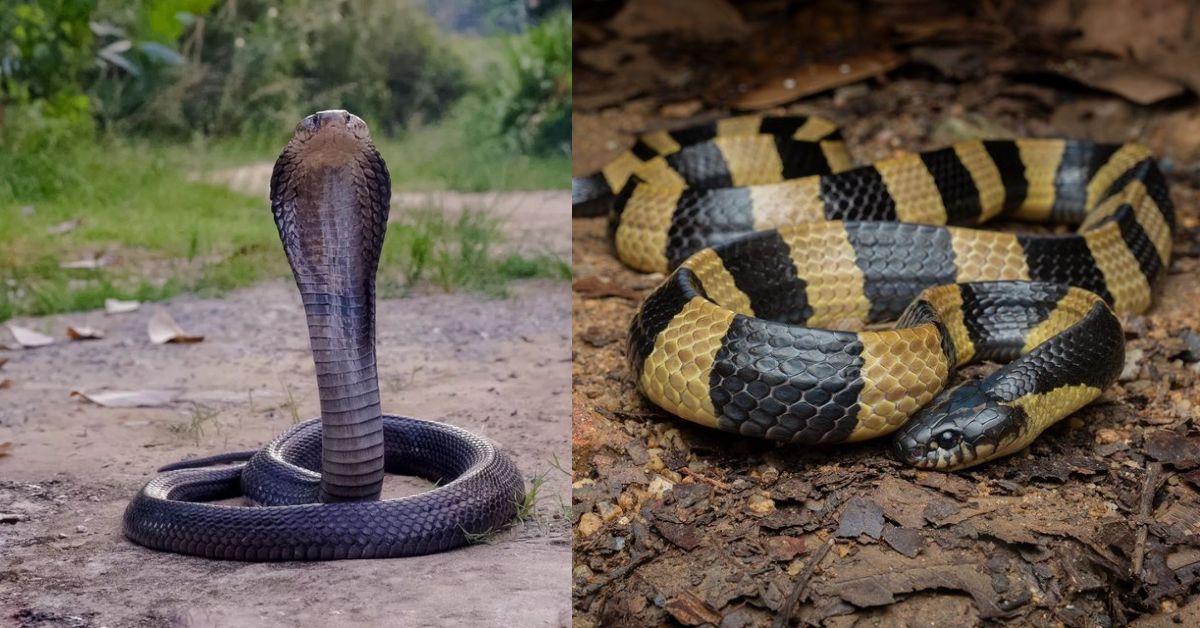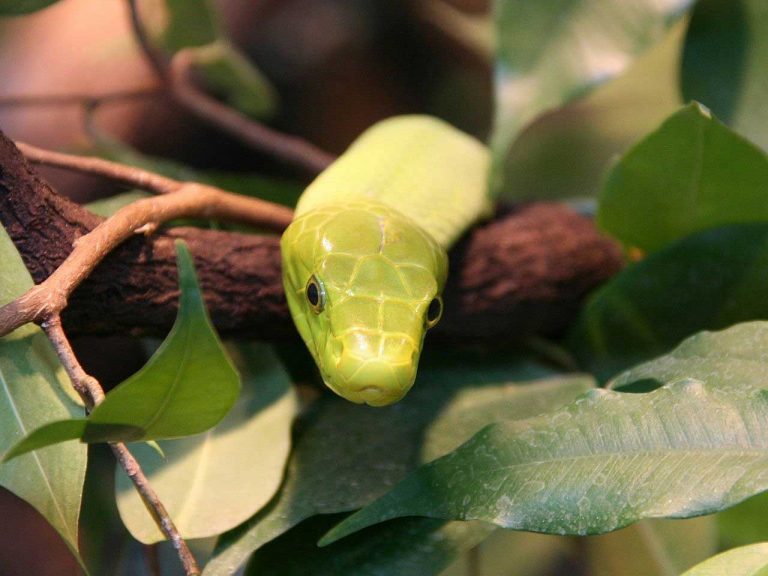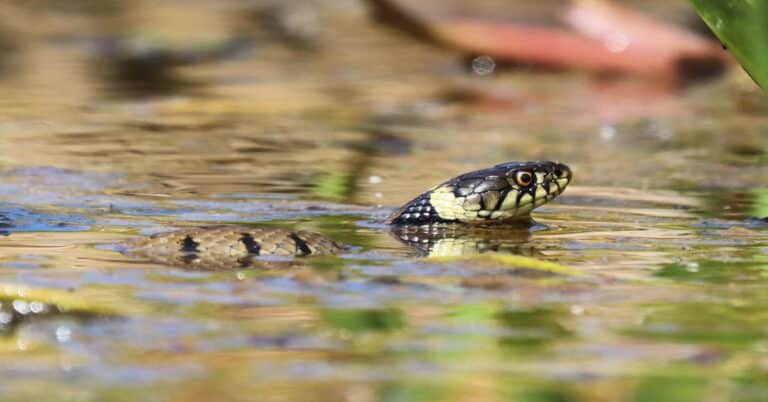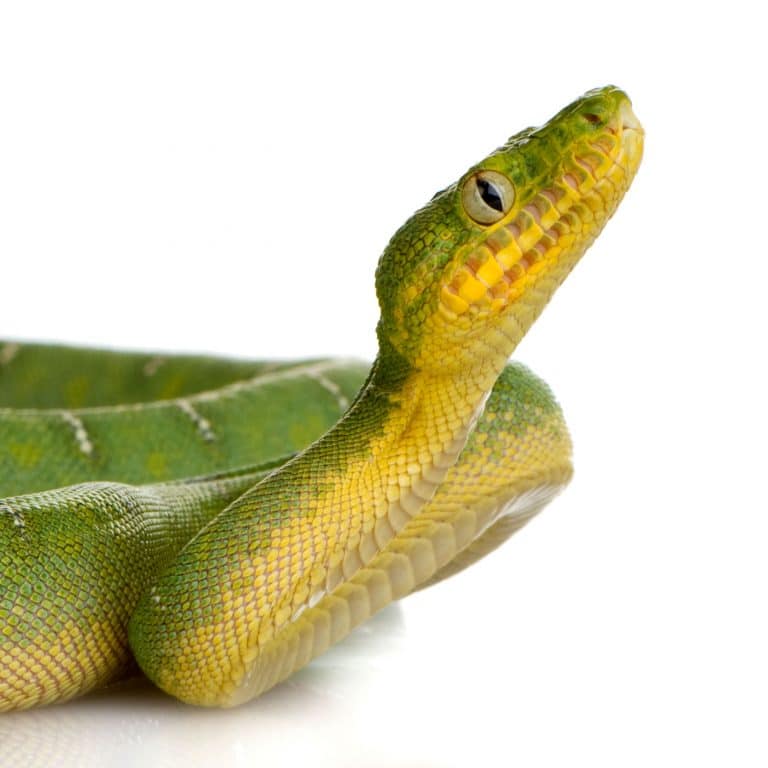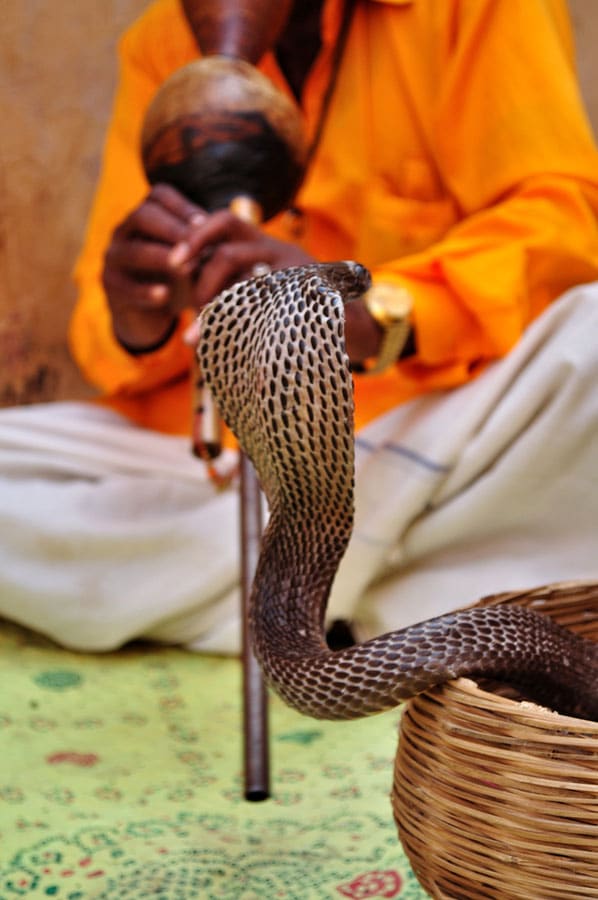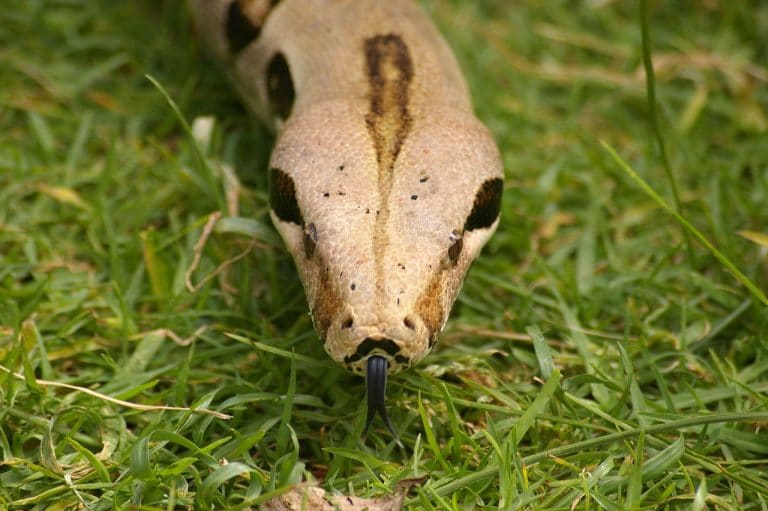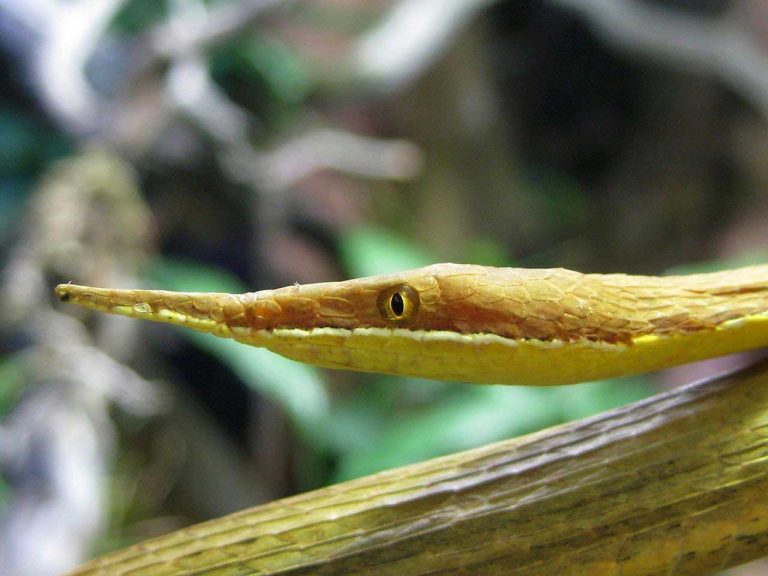Snakes in Thailand In The Land Of Smiles
Did you know that the famed Land of Smiles and the home of muay thai, offering the attractions of picturesque beaches and golden-glittering Buddhist temples, might also be home to an abundance of snakes? If not, you have come to the proper site to gain knowledge about every unique feature of snakes in Thailand.
Featuring varied diversity and unique alterations, the kingdom of snakes is both compelling and appealing. Since long before recorded history, humans have been fascinated by snakes in Thailand, whether it is due to their bright colors or their robust constricting capabilities.
Let’s delve into the distinct realm of snakes in Thailand and make an initial effort toward confronting them without interfering with your fascinating experience in Southeast Asia!
A Brief Overview of the Thai Kingdom of Snakes
Thailand is inhabited by more than 200 distinct kinds of snakes, either venomous or non-venomous. Since snakes are occasionally challenging to identify and their density could vary depending on the environment and accessibility to food, it is hard to figure out the precise number of snakes residing in Thailand.
Though not all of Thailand’s almost 60 species of snakes are capable of killing an individual with a bite, they are all deemed to be poisonous and potentially harmful to mankind. Thailand widely features cobras, coral snakes, piton snakes, and smooth snakes, all of which are deadly predators. Ground snakes, bamboo snakes, and green tree snakes are a few of the non-venomous snakes in Thailand. Among those 60 species, approximately 50% reside on land, and the remaining 50% do so in aquatic surroundings.
It might astonish you to learn that in any given month, 3,000 snakes are thought to be reported and captured in Bangkok, the capital of Thailand. Thankfully, the majority of them won’t be poisonous. Nevertheless, there have been reports of deadly cobras and pit vipers recently.
Since many of the snakes in Thailand prey on mice and rats, they help manage those rodent populations, preventing agricultural loss and the spread of illnesses. As a result, snakes are an advantageous component of Thailand’s environment. Some of the smaller snakes consume insect larvae and aid in the city’s population management of ants and termites.
5 Most Poisonous Snakes in Thailand
1. Monocled Cobra
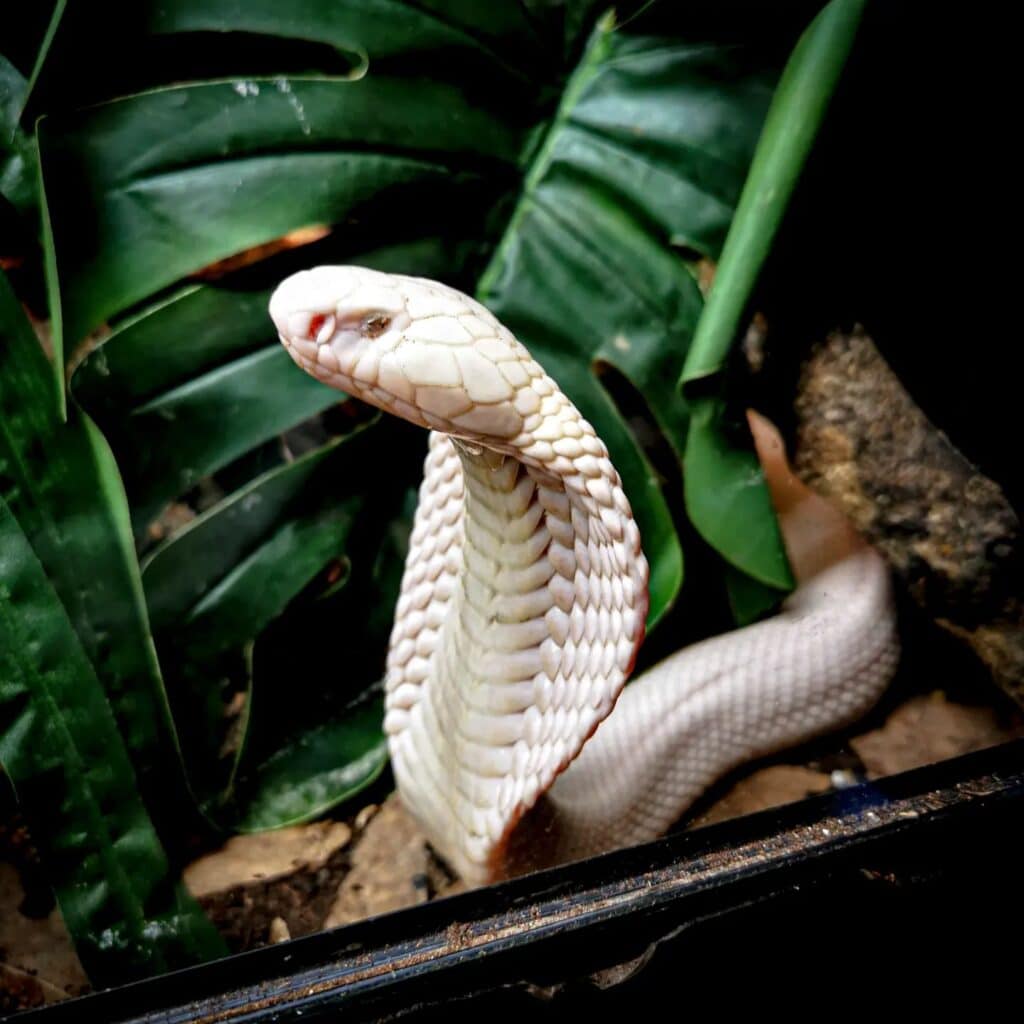
The monocled cobra is thought to be one of the most lethal venomous snakes in Thailand. It is classified as extremely poisonous on the lethal dose scale, and the fact that they are frequently active throughout the day makes it considerably worse. The monocled cobra is regarded as the snake species in Thailand that has killed the greatest number of people overall.
The venom of monocled cobras contains a potent neurotoxin that prevents nerves from communicating properly. That may result in paralysis, breathing difficulties, muscle spasms, and other problems. However, skin flushing and heart palpitations are among the primary signs of an attack. If a bite from a monocled cobra is not treated, death might occur in less than an hour.
Monocled cobras are renowned for their extreme adaptability since they can live anywhere, including wide farm fields, watery rice paddies, and jungles. In Thailand, they are frequently seen crossing roadways or sunbathing on sidewalks, so watch where you step! They are also rather active throughout the day, which is potentially dangerous for tourists.
2. Malayan Pit Viper
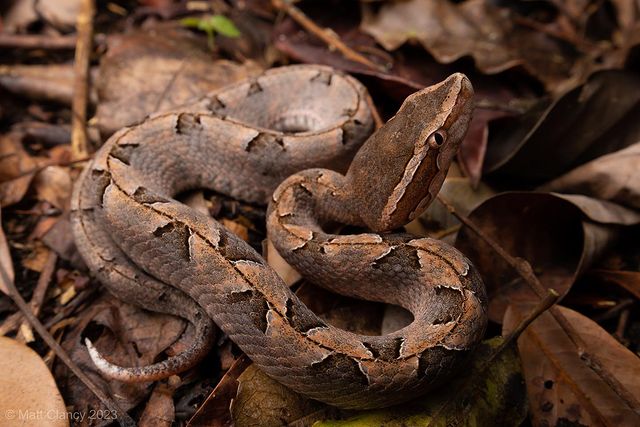
The Malayan pit viper ranks as one of the deadliest snakes in all of Asia and likewise among the most venomous snakes in Thailand; hence, it should always be avoided. It is commonly distributed all over the continent, from the lowland forests of Laos to the storm-tossed Indonesian islands. In Thailand, they are particularly prevalent in coastal woodlands and bamboo forests.
Considering the Malayan pit viper’s venom may effectively kill every living cell in the body, the bite of this snake is extremely dangerous. Along with hematological consequences like bleeding from the eyes and nose, victims will experience deteriorating tissue, necrosis, and other conditions.
The distinctive triangular shape of the skull makes a Malayan pit viper easy to recognize. It features an appearance more usually associated with rattlesnakes found in North America due to its lengthy, flatter underbelly and difficult-to-see camouflage patterns.
3. Red-Necked Keelback
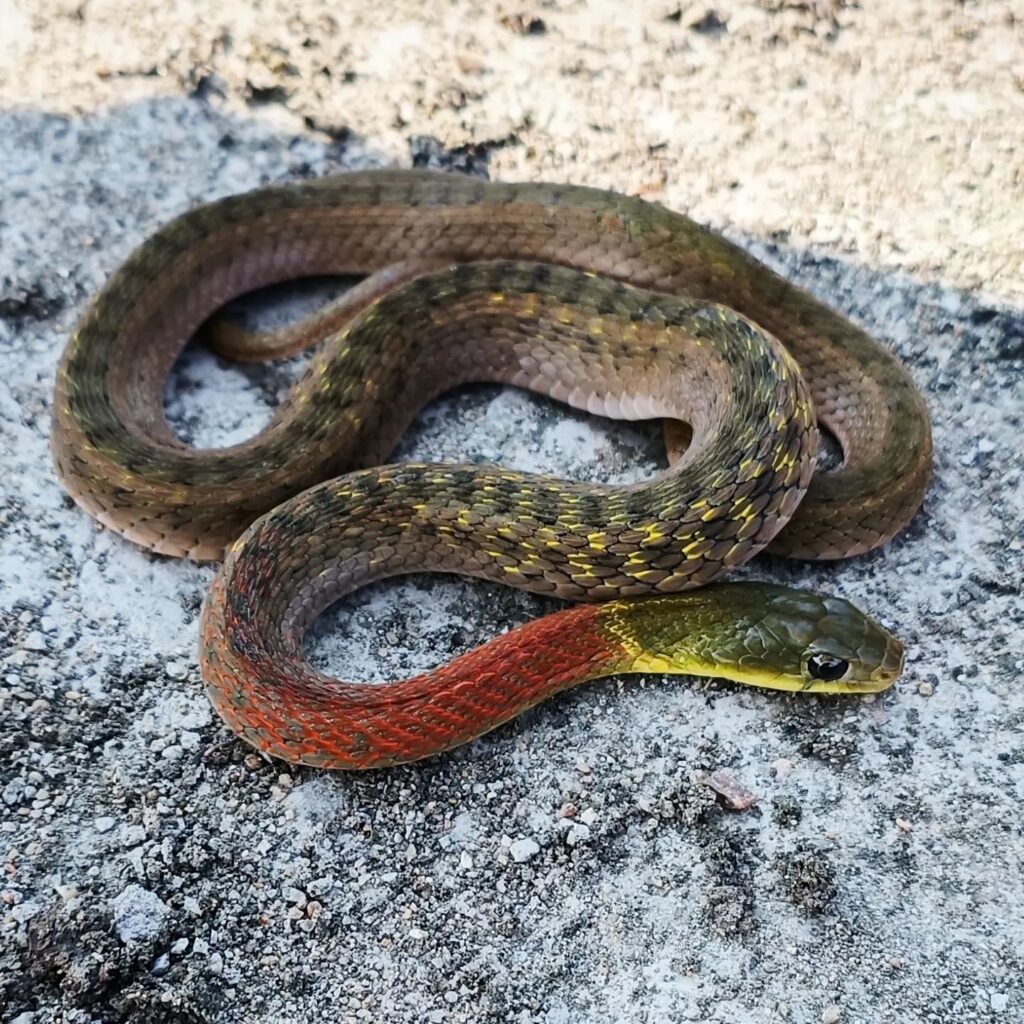
Due to its stunning appearance, the red-necked keelback is a herpetologist’s delight. They have a distinctive color pattern that originates as light yellow on the upper neck, transitions to rich orange, then fades into a blend of gray and black as it gets closer to the tail. Furthermore, they are delicate and small creatures, rarely exceeding 1 meter in length.
Despite its attractiveness, you shouldn’t approach it too closely, as they are regarded as one of the most venomous snakes in Thailand due to an assault that can result in serious brain hemorrhaging and kidney failure, both of which are deadly outcomes.
The positive side is that since the red-necked keelback possesses a rear-fanged bite, it needs to attack its prey continually or strike for a prolonged period to inject a lethal quantity of venom. In fact, for quite a while, people used to keep red-necked keelbacks as pets and didn’t even consider them to be harmful at all.
4. White-Lipped Pit Viper
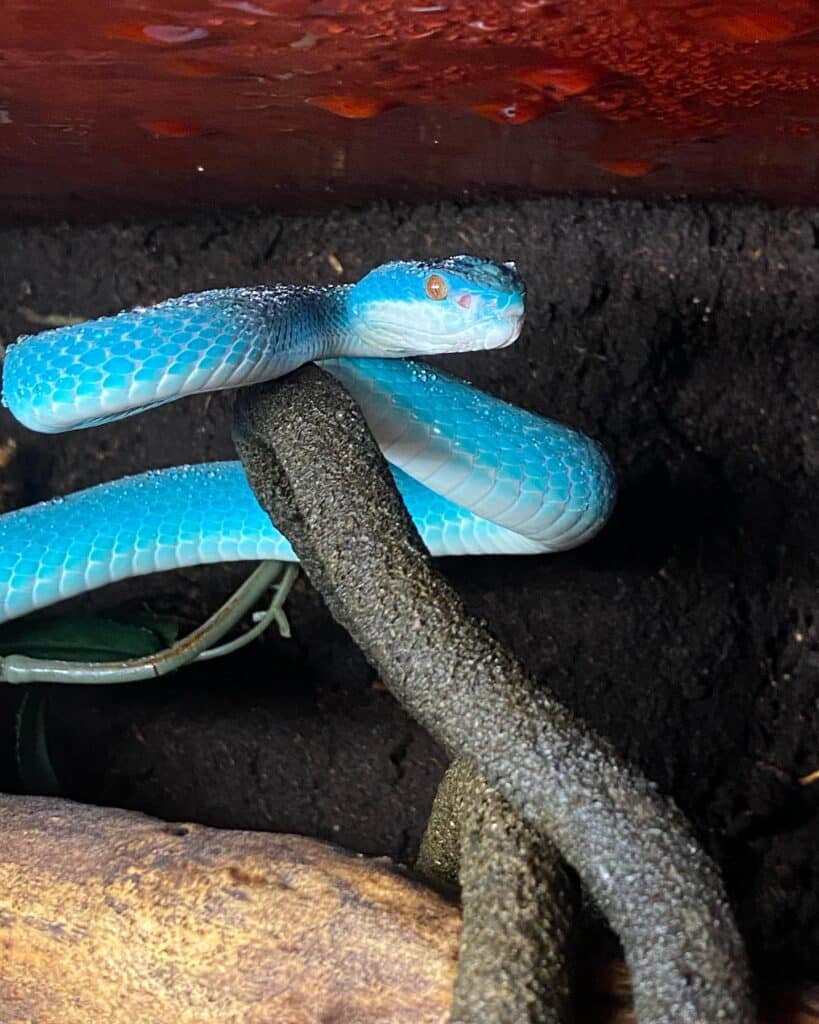
The venom of the white-lipped pit viper has the potential to be lethal and is strong enough to kill an adult. The venom is a procoagulant that disturbs the blood system and causes extensive bleeding, necrosis of the muscle, as well as excruciating pain and swelling wherever it comes into contact. The only slightly encouraging fact is that, in comparison to other snakes in Thailand, white-lipped viper attacks are rarely lethal.
These snakes prefer to reside in Thailand’s semi-wooded and wooded areas. They live 500 meters below sea level and only venture outside at night. However, as a result of their combative temperament and the fact that they are frequently found close to towns and villages, they commonly come into contact with people.
They stand out since they are an intense shade of green. They have twisted body that ends in pointed head with inlaid eyes that have a yellowish mustard coloring. Adult members of the species rarely exceed 1 meter in length.
5. Banded Krait
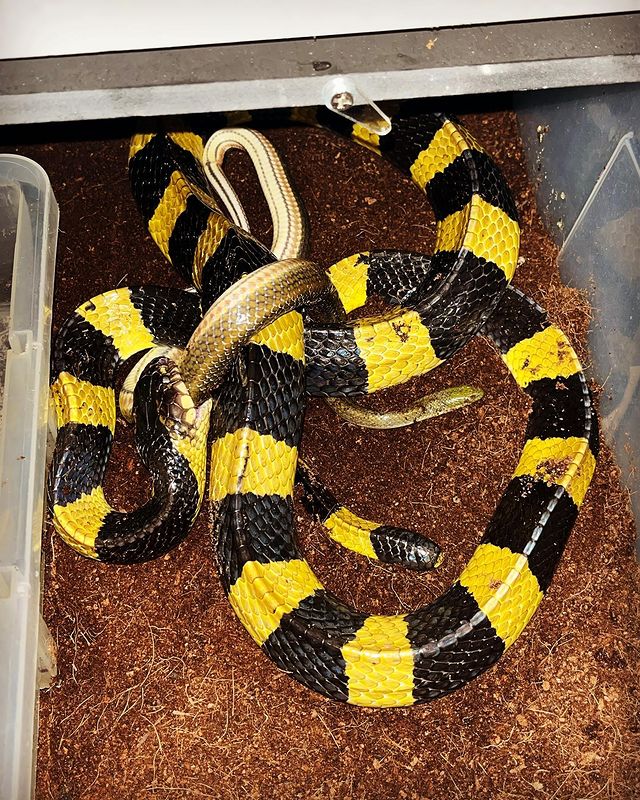
Bungarus Fasciatus, also known as the Banded Krait, is one of the venomous snakes in Thailand that can be observed throughout the entire region of Indochina and the Indian subcontinent. However, Thailand and the broader Malay Peninsula are where its distribution is most concentrated. This vividly colored serpent prefers to reside in dry, dusty places like farm fields at heights that are typically lower than 2,200 meters above sea level.
Because of their striking pattern of alternating black and yellow stripes and an arrowhead-shaped skull with a deep black eye on top, banded kraits are quite difficult to miss. The longest example of this species ever discovered measured 2.5 meters in total. However, the majority only reach 1.5 to 2 meters.
It should be noted that the great majority of Asian krait species are quite harmful when it comes to their venom. Each banded krait bite contains up to 114 mg of venom, which can cause death by respiratory failure, vomiting, abdominal pain, and other symptoms.
Safety Measures: How to Deal with Snake Bites
Even though most snakes in Thailand are harmless, it is nevertheless advisable to use caution when exploring the country’s rainforest or other natural areas. It’s crucial to keep in mind that touching or attempting to catch snakes in Thailand is prohibited and might result in serious consequences.
If you are bitten by a poisonous snake, there should be antivenom available at the nearest hospital, as snakes are not a rare thing to come by in Thailand. Finding out what kind of snake it is and whether it is dangerous is the primary concern for medical professionals in Thailand to ensure the appropriate anti-venom treatment can be provided.
According to the World Health Organization (WHO), most traditional methods of first aid are not advisable, as they tend to do more harm than good. After a bite, do as follows:
- Call Thailand’s emergency ambulance hotline at 1669.
- Be aware that swelling or change in color in and around the bite area likely indicates the snake was venomous.
- Stay calm, restrict movement, and keep the affected area lower than the heart level.
- Try to take off rings and other tight, restricting clothes, but avoid making contact directly with the wound.
- Check for paleness or other signs of shock while keeping an eye on respiration and pulse.
- Make a note of any features that could assist the medical team identify the type of snake, as this will aid them in selecting the appropriate antidote.
Final Thoughts
As you can see, while poisonous snakes like cobras and vipers are feared, the majority of snakes in Thailand are harmless if left alone. While the majority of snakes are non-venomous and avoid contact with people, some have venom that can be dangerous or even fatal.
That’s why we believe it’s essential to emphasize assurance when handling snakes by employing the utmost caution. For healthy cohabitation with these fascinating creatures, comprehend snake habits, identify warning indications, and respect their boundaries.

Nato is a content writer and researcher with a background in psychology who’s eager to explore the wonders of nature. As a travel enthusiast and animal lover, she hopes to inspire others to discover and cherish the beauty and importance of the natural world.

